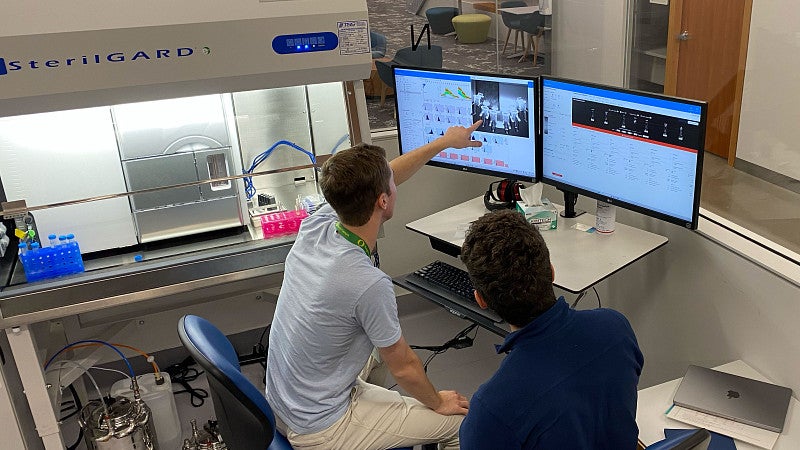A pair of new flow cytometers are two of the latest additions to the Knight Campus’s growing list of scientific instrumentation. The shared instruments, a Cytek Aurora CS and a Cytek Aurora, enable researchers to detect and measure the physical and chemical properties of cells. Both instruments analyze cells, but the Aurora CS also sorts cells. The instruments were recently added to the Knight Campus.

“We can collect more data points across more samples in a much shorter time,” Fox said.
The new instruments will eventually be housed in a core facility along with other cytometers on the second floor of Knight Campus Building 2, which is scheduled to open in early 2026. They could be incorporated into muscle and bone studies by researchers in the Willett and Lindberg labs.
“I hope to get people excited about flow cytometry,” Fox said. “Not much work has been done to show how biomaterials such as nanoparticles can be utilized and validated (with the instrument).”
The cytometers are currently available to researchers in the Knight Campus and the Wu Tsai Human Performance Alliance. For more information, including training requests and questions about the instruments, please contact Nate Fox at natefox@uoregon.edu.
— Malvika Singhal
